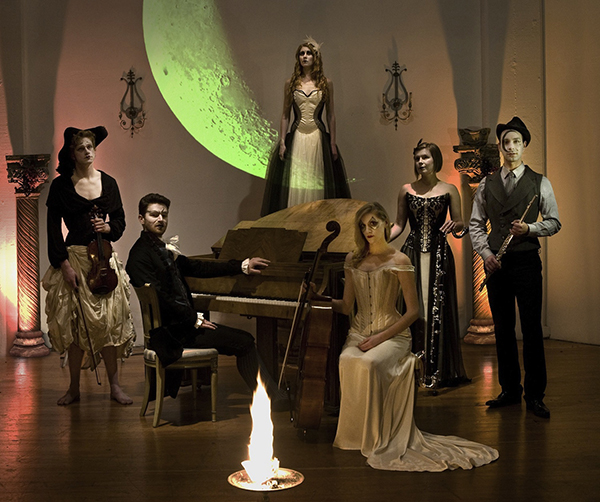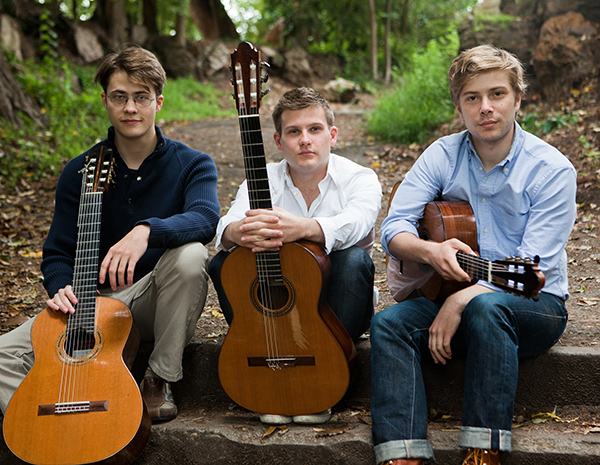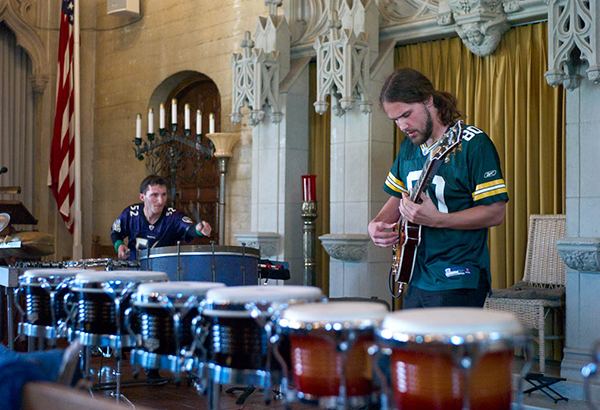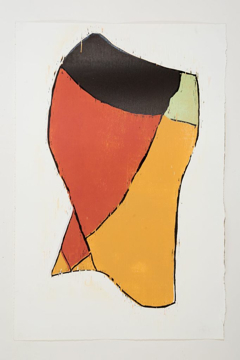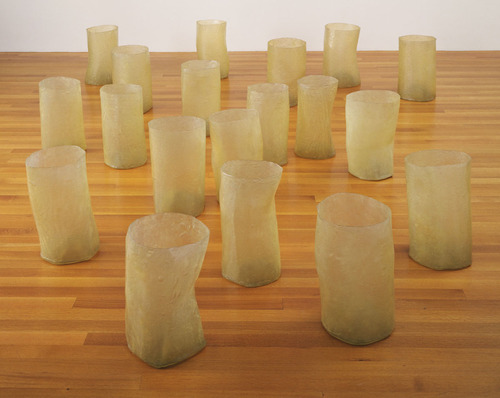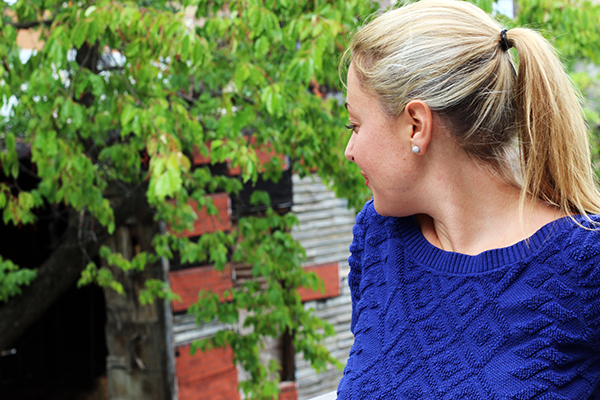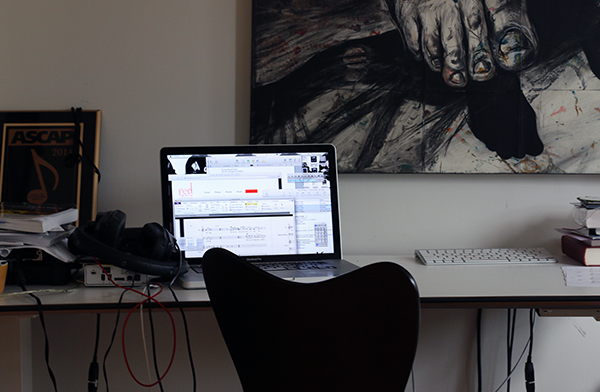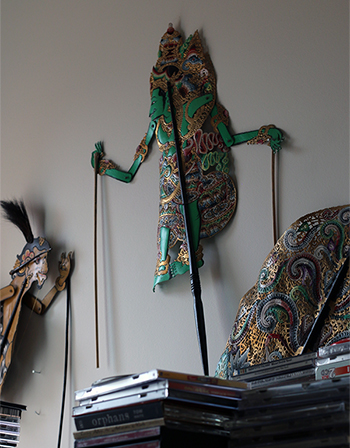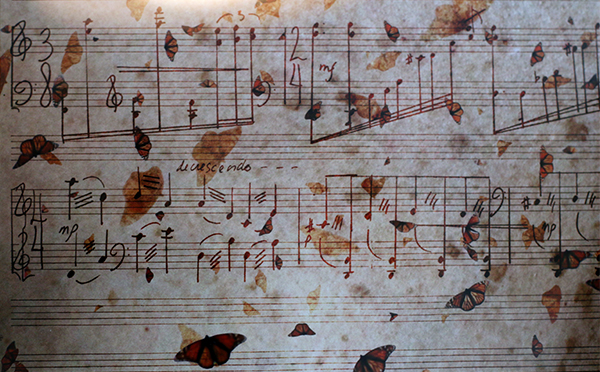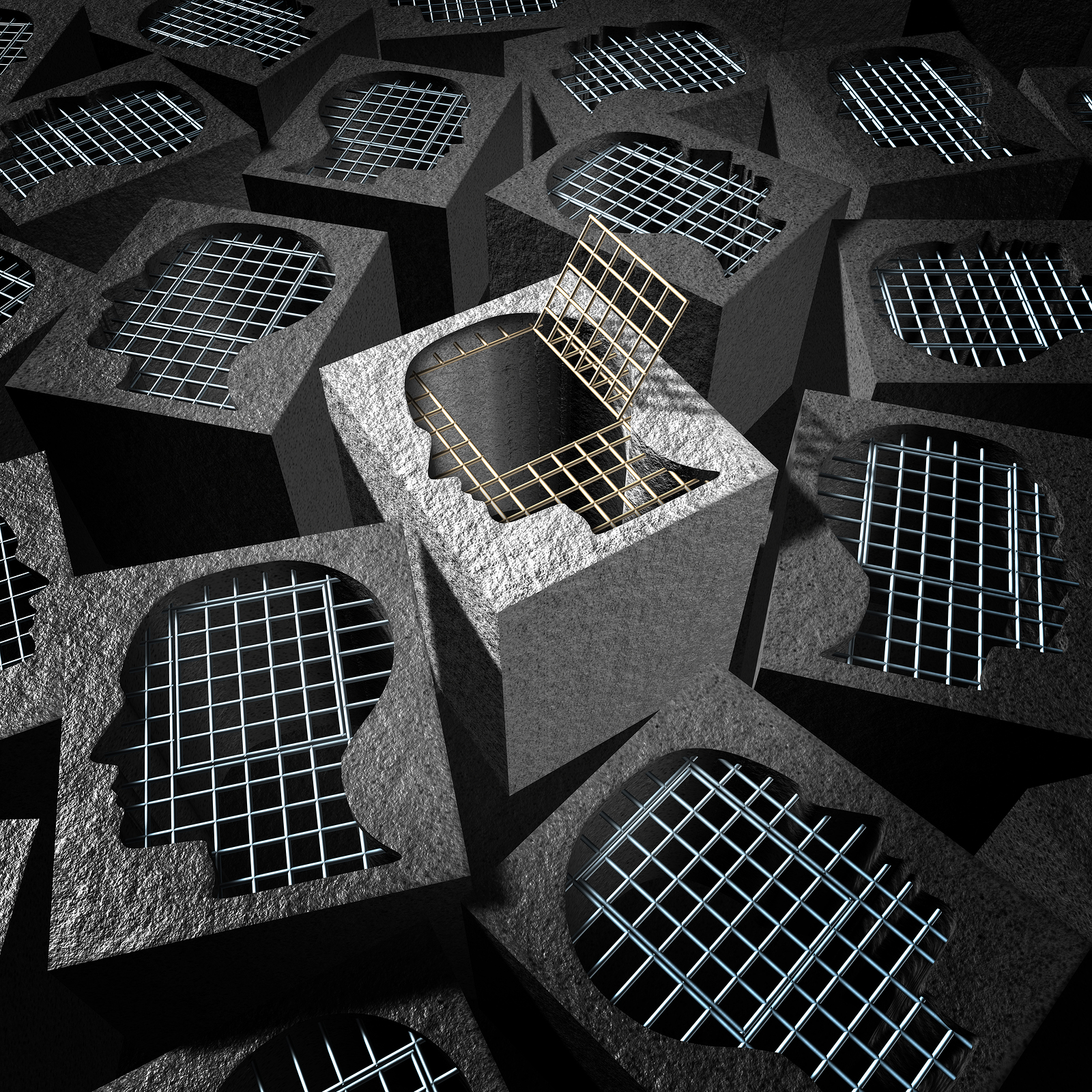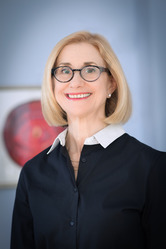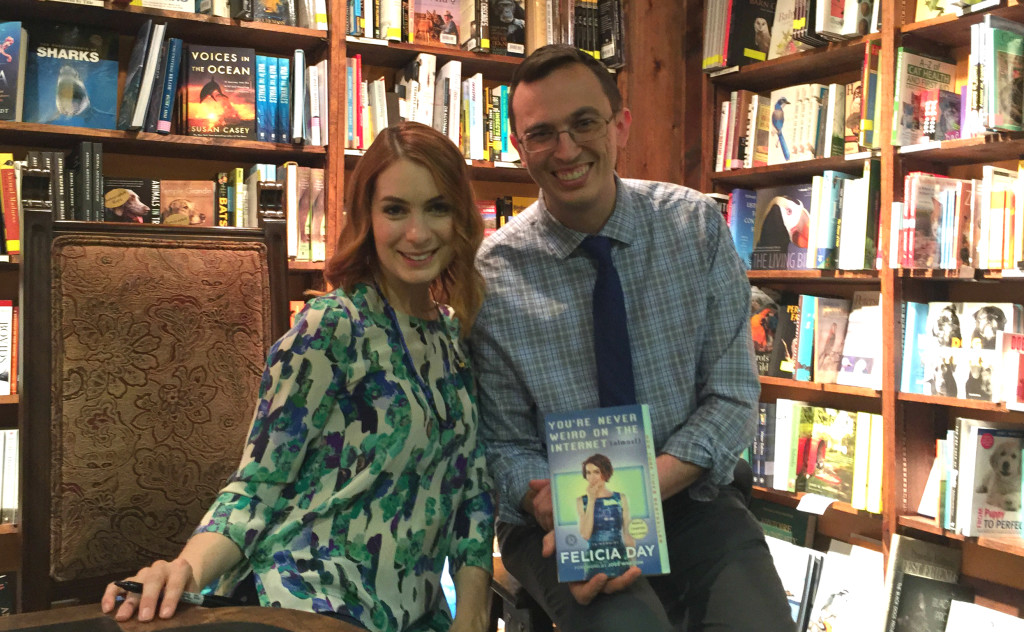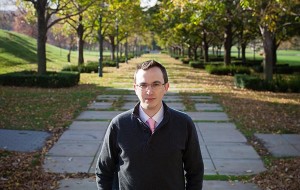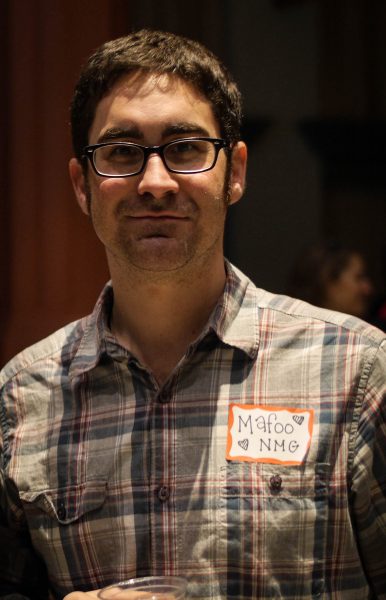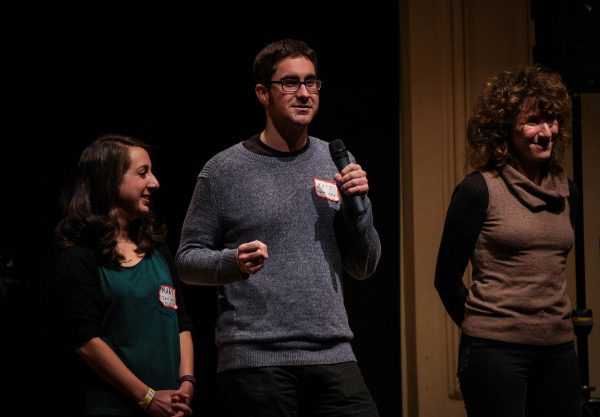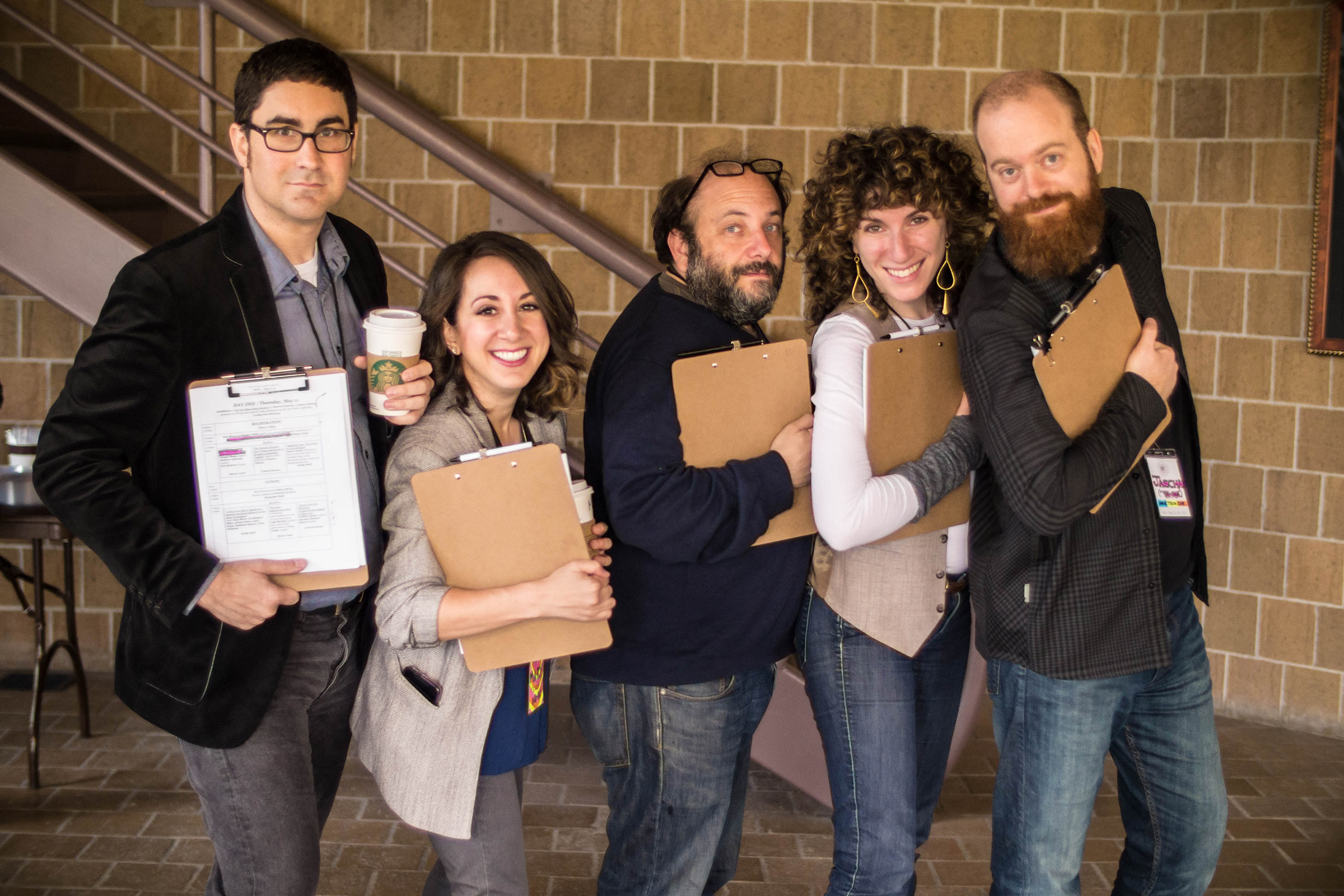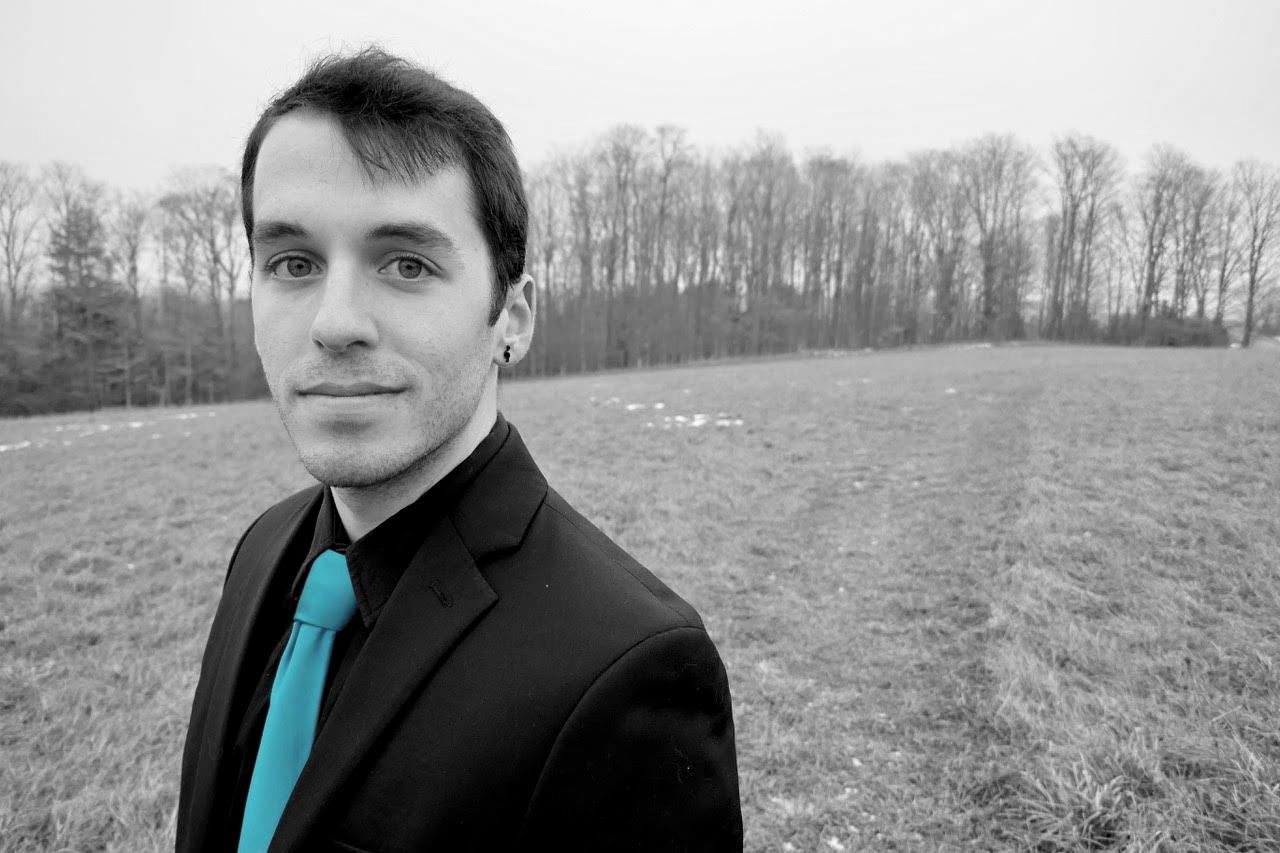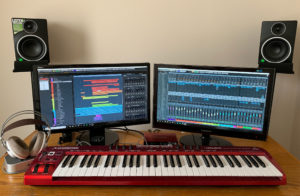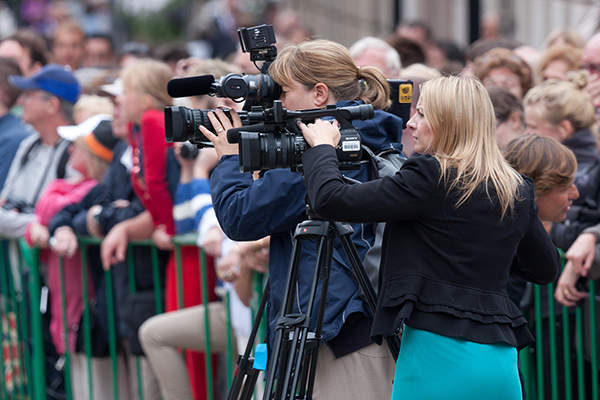
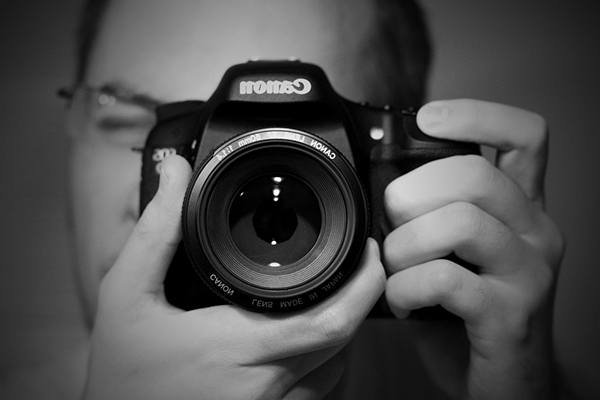
Photo by Daniel Dionne, via Flickr
I began to contemplate the relationship between composers and the media in the days and weeks after the New York Youth Symphony’s decision to pull one of their own commissioned works by New England Conservatory graduate student Jonas Tarm because of its use of the “Horst Wessel” anthem. The brouhaha that followed the decision demonstrated the specific nature of the controversy. Similar in tone, if not in scope, to the coverage of the protests against the Metropolitan Opera’s performance of John Adams’s The Death of Klinghoffer, the confluence of red-button topics—cultural sensitivity vs. censorship—ensured that the story would be noticed beyond the traditional contemporary concert music coverage and land Tarm and the NYYS on a broader stage that ultimately included Fox News, National Review, NPR, and the Chronicle of Higher Education. While events like these—and the more recent dustup around John Adams’s comments from the stage about Rush Limbaugh at the premiere of his new work for violin and orchestra—briefly garner attention on a large scale due to their contentious subject matter, they are outliers at best when it comes to coverage of new music, the composers who create it, and the performers who bring it to life.
Outliers aside, I was and am very interested in the perceptions and interactions between those who create and those who work to inform about, advocate for, and disseminate new work. Composers and performers today look to the media (whatever they think that might be) as a conduit between their art and the general public. As digital media and social networks continue to evolve, both the proximity and the fixed boundaries between creators and the media have been affected. Those who prepare composers and performers for their careers are continually faced with questions about how much attention should be given to such topics within the higher education curriculum. To these points, I asked a number of questions to several critics, composers, performers, and other professionals in order to “take the temperature,” so to speak, of the understanding and place of the media within the new music community.
ROLES AND EXPECTATIONS
My first question was asked in two different ways. To critics, I asked, “When you write about living composers, new works, or performance by ensembles who focus on new music, what role do you see yourself embracing?” To composers and performers, I asked, “When you read about living composers, new works, or performance by ensembles who focus on new music, what role do you hope to see the media take in their presentation?” You will notice that both questions were geared toward written media. While there are radio programs and podcasts about new music and its creators and performers, those are few in number and even fewer venture beyond basic presentation of the music.
Washington Post music critic Anne Midgette reflected the basic thread of her colleagues, stating, “In general, I think my job as a critic is to tell people what happened, what was newsworthy about it, and help them think that they should care, with a larger goal of fostering discussion about the field and keeping the field visible to the general public, to some degree, by having it mentioned in a newspaper to begin with.” Besides educating readers, Chicago Reader‘s Peter Margasak doesn’t “set out to function as a consumer guide, but as a thinker who might provide some inroads into new or unfamiliar work—making connections, explaining, and setting aesthetic ideas within an accessible framework.”
Pulitzer Prize-winning critic Tim Page remembered being timid toward new works when he first heard them, providing a description and cursory judgment with such statements as “on a first hearing, it seemed…”—a technique he still teaches to his own journalism students at the University of Southern California. “Sometimes, something that you don’t respond to the first time, you may respond to differently” on future hearings, Page said. Allan Kozinn, critic for the Wall Street Journal and former critic for the New York Times, added that his descriptions “should give the reader a sense of what the piece sounds like, to the degree that language can capture that. At the very least, the reader should come away knowing what the instrumentation was, and how it was used, where the composer fits in the stylistic continuum, how long a piece it is, and what the major ‘events’ in the piece are.”
These initial statements coincide with the expectations of a number of composers and performers who, as Pulitzer Prize-winning composer Jennifer Higdon says, “hope the media will give me all the information that I need to know…the more in-depth, the better.” The desire for in-depth reporting on the performance of a new piece is a strong one, although not always feasible within the amount of space allotted to the critic. Depending on the context of the concert, I have seen examples of critics asking for scores from the composers ahead of time and incorporating interviews recorded before a premiere, but much too often such examples are seen as luxuries due to time and space. Composer Chris Cerrone hopes that this concept goes even further into the realm of “showing us the music. Technology has moved so quickly that it is not hard at all to get a document of a new work online just a few days after a performance. More than anything else, I think the media has the opportunity to give audiences direct access to the actual work and let us judge for ourselves.”
One aspect of music journalism that some composers don’t want to see is too little attention on the work. Composer Derek Bermel, for example, prefers it “when a journalist focuses on the work of art itself, rather than on the personality (or persona) of the artist,” while composer Greg Wanamaker asks that journalists “address the quality of composers’ works and ensembles’ performances over popularity and edgy concepts devoid of substance.”
That being said, quality criticism is seen as important for the status and sustainability of the music, as well as the career momentum of the creators and the performers. “I always hope that the media will play a role in broadening the conversation about new music,” pianist Michael Mizrahi says, “and of course media recognition still directly translates to further performances.” Composer and Naxos Vice President Sean Hickey brings up the topic of interviews in regard to recordings, saying they are “an important element if only for sharing via Vevo, and ultimately, YouTube in the case of video, and via any digital service provider for audio. That is to say, an interview can potentially find a larger audience outside print and diversifies the experience for those wishing to encounter one’s music for the first time.”
Beyond the descriptive and illustrative aspects of criticism, the topic of advocacy came up many times. When Midgette writes about new music, she does “feel I’m advocating in a certain sense, because most of my readers tend to be more familiar with Beethoven than, say, Missy Mazzoli. That doesn’t mean I feel I need to go easier on the performances—quite the contrary; I think overpraising performances is the opposite of real advocacy—but it does mean I’m aware of a certain need to contextualize, and also a certain eagerness on my part to get people enthusiastic about this area.”
Kozinn’s passion for new music is visceral. He explains that “when it comes to new music and new music groups, we’re in an area that means a lot to me. Critics, to the contrary of what is often said, do not have to be dispassionate, and any critic who claims to be is lying. We write about music because we love it, and like anyone, we have tastes and preferences, things we like best and things we like least or don’t like at all. For an actual, thinking human being, it simply cannot be otherwise, and there’s no use pretending it can be simply to pursue a claim of ‘critical objectivity’ that actually cannot and should not exist…when we’re writing about music, or performers, or composing styles—or anything—that we particularly like, we almost inevitably become advocates for it, even if that’s not how we perceive the job. I mean, think about it: if I love a composer’s work, to a certain degree, the basic subtext of any review or feature I write about it will be: ‘I think this is fantastic stuff, so if you haven’t heard it you should, and if you’re not sure what to make of it, perhaps I can guide you through the most compelling bits.’”
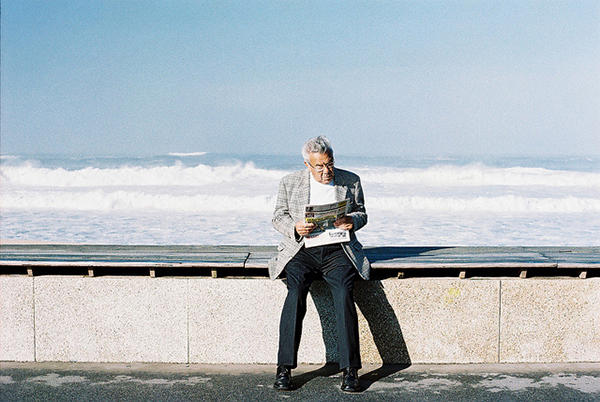
Photo courtesy of Miguel Pires da Rosa on Flickr.
INTERACTIONS AND SOCIAL MEDIA
One notable comment that came from several composers and performers had to do with what I meant when I asked them about “media”—which media was I asking about? As composer Ken Ueno posited, “In many areas, newspapers have gone out of business or no longer have a music critic. And when there is a review, it is nowadays likely to be a play-by-play of the surface form of pieces, or a cut-and-paste job from the composer’s own program notes.” This reduction in traditional media, however, has occurred alongside the influx of blogs, digital magazines (such as NewMusicBox and I CARE IF YOU LISTEN), and the granular interactions that occur constantly on Facebook and Twitter, which led me to my next path of inquiry.
The next two questions I posed were: “Have you noticed a shift in the past 5-10 years as far as the relationship that composers and performers have with members of the media?” and “How has social media changed the way composers, performers, and music journalists interact/work together?”. Unsurprisingly, many ended up unintentionally answering the second question within their answer to the first question—a fact that demonstrates how ingrained social media is within our own professional interactions today.
Historically, there were more professionals in the media whose job it was to keep tabs on the concert music scene, but along with those greater numbers there was an attendant bottleneck/gatekeeper mentality. Allan Kozinn, after reading reviews from 30 and 40 years ago, says, “I think there was an almost adversarial relationship that doesn’t exist in quite the same way today. That may be because of a generational shift of focus that began in the 1960s, and which bore fruit in the later 1980s, when the critics—and composers—shaped by the 1960s entered the professional world on either side of the (critical/compositional) divide.” Tim Page adds “Composers like Virgil Thomson and Morton Feldman made it very difficult to work with them while they were living, but their music has grown in prominence after their deaths. Some composers always had a better relationship with the media; they just had a certain charisma or made it easy to interview or made a good story…I stopped reviewing Philip Glass, for example, because I had formed a friendship with him and I found myself being too harsh in my reviews as a result.”
In addition to critics, publicity professionals have seen major changes in the way social media has shifted relationships with the media over the last decade. Steven Swartz, founder of DOTDOTDOTMUSIC, has seen the ability to gain media attention improve greatly, but that ease has brought with it challenges as well. “It’s certainly democratized things.” Swartz says, “At the same time, it’s led to a lot more ‘noise,’ as innumerable artists clamor for attention.” Anne Midgette is a bit more blunt: “…it’s a very individual thing; there’s no template for how people use social media, and different people have different comfort levels when it comes to interacting with artists/critics/’the other side.’ Social media makes it feel chummier in a way, for better or worse, and of course it isn’t. This illusion of chumminess has also meant some artists have managed to royally piss me off.”
Most performers and composers who I contacted seemed to have a mature concept of their interactions with those in the media. Most, such as violinist Miranda Cuckson, see the rich opportunities for interaction and collaboration: “It helps people support their colleagues or show their enthusiasm in a public way,” Cuckson says, “and it gives journalists quick access to info about events or things in the works. In some ways, having discussions among artists and press in a public way makes people demonstrate their integrity and both their conviction and their ability to adjust their viewpoints, in a healthy way.” Others see the increase of advocacy through social networks as a good thing, such as conductor and composer Brad Wells: “Reviews, listings, previews, etc. for new music are more commonly spilling over the gates of the ‘classical’ or ’new classical’ sites into more popular or less genre-defined arenas. So the audience broadens. I also experience many music journalists as advocates for performers and composers—as well as audiences.”
Such experiences can both promote a more realistic and natural perception of one’s place in the community and easily lead to interactions away from the printed or digital page. Composer Daniel Felsenfeld enjoys the fact that we can observe each other as we interact: “The composer-performer thing has, at least for me, been aided tremendously by social media—I can trace pretty much all that is happening for me professionally to Facebook or Twitter at this point, for better or for worse (almost always for better).” Composer Judah Adashi, no stranger to social media, finds that the “communal sensibility doesn’t eliminate the fear of a bad review, but it’s a healthy reminder that we are largely in this together. It’s a culture that fosters opportunities for collaboration: we’ve hosted Alex Ross twice on the Evolution Contemporary Music Series, and I just invited Will Robin to Skype with students in my contemporary music course at the Peabody Conservatory.”
Ultimately, each creative artist has to find what works for them and form their own concept of how they choose to interact with their colleagues, the media, and their audiences in this rapidly changing world, a fact driven home by composer Eve Beglarian: “Basically, all artists have to figure out their own way to market their work and their worldview. I can come up with my own ways to get my work out there that do not compromise my artistic standards, but are themselves an extension of my creative work. Promotion done right is then about generosity, curiosity, openness, curation, and collegiality, and not just about flogging one’s own ‘brand.'”
PREPARATIONS
So far, we haven’t run into too many conflicting voices, but when terms such as “brand,” “marketing,” and “entrepreneurship” come up in conversations about composers and performers, there tend to be a number of varying opinions. As an educator who works with young composers, I couldn’t help but add a fourth question: “There are some composers and performers who work very fluently with the media; is this a concept that should be discussed in the classroom before these artists begin their post-collegiate careers?” I came at this question with a fairly open mind; I myself make sure my students are aware of what’s out there and critically think about how professionals interact online, but I am well aware that they have bigger fish to fry career-wise than solidifying their online persona and therefore do not push them to venture too far into the digital landscape.
Derek Bermel, for one, is dubious about incorporating entrepreneurship into the classroom: “For my money, it’s most important to educate students to 1) think for themselves, 2) organize and process information, and 3) write and express themselves articulately. This means offering them a broad educational background, which—besides music—includes creative and analytical writing, mathematics, philosophy, and languages, as well as vocational and mechanical skills. These are the tools to succeed. The rest is noise, to quote one member of the media.”
“I’m not sure what that would look like!” says composer Alexandra Gardner. “At that stage in a composer’s development I think a slight reframing of the discussion would be better – to teach students the standard procedure for doing press for a performance or album release. As in, ‘One month before, send a press release, two weeks before do X, Y and Z…’ They could be taught how to write a good press release, etc. Regardless of social media, one still has to have the basic press-doing chops. THAT is important!”
Having recently discussed such things with Pulitzer Prize-winning composer Melinda Wagner, I was glad to receive some thoughts from her on this topic. Stressing balance, she says, “I think it is important to be comfortable with the media and to know how to make it work for you. In this regard, yes, a certain facility with the media should be discussed in the classroom – with one proviso: it is relatively easy to come across as brilliant, amazing, and vastly successful on, say, Facebook—even if you are not particularly good at the actual composing! Sure, go ahead and talk about social media in the classroom—just make sure students spend at least as much time at their craft as they do looking brilliant, amazing and vastly successful online!”
Others are even more supportive of such curricular implementations. Composer and ASCAP Board of Directors member Alex Shapiro unabashedly states: “Abso-friggin’-lutely. Most artists have no idea just how much power they have to control the interpretation, reporting, and narrative of their own work. It’s vital for younger creators to understand how they can use their web presence—the publishing of their souls—to their advantage.” Jennifer Higdon demonstrates that such concepts are already in place at the Curtis Institute where she teaches: “This is a part of Curtis’ training with all of the artists. We have seminars and master classes on this very thing…for radio interviews, print interviews, and even in talking with audiences.” Allan Kozinn has been teaching similar classes for years at NYU: “Mostly, what I have them do is criticism of various kinds, so that they can see what’s required and how it’s done (and, for most of them, how it isn’t quite as easy as they think). But there is also a big component of the course devoted to explaining how the press works, what kinds of things interest us, how review schedules are planned, and how to reach us or get our attention.”
Composer Lisa Renée Coons believes that “we need to teach young artists sustainable career practices. Schools granting arts degrees should teach at least some professional development along side the other tools of technique, discipline, critical thinking, etc. The professional development tools are necessary to continue to make their unique work. We should empower them to facilitate their own work, build communities, and disseminate their art. Without these tools they may cease to participate at all in the artistic dialogue.” Composer Jennifer Jolley agrees: “Yes. Absolutely. I think we should all learn how to talk about our music, give presentations on our pieces, write copy, write press releases etc. Informing members of the media what your organization is about and what your concert or concept or piece is about will help them do their research and educate (and quite possibly excite) your audience. Anything that helps with communicating with an audience will also help communicate with the media.”
Finally, British-based composer Cheryl Frances-Hoad provides some perspective from the other side of the Atlantic: “I am glad that I wasn’t made aware of any of this stuff to be honest. I am glad that I left Uni with a relative degree of ignorance—if I had been fully made aware of just how difficult it was to make a career as a composer, I may have been discouraged! On the other hand, I think there are tried and tested ways of successful interaction on social media now, so, a few hints and tips would probably go a long way…Most opportunities I get seem to come from word of mouth recommendation, or relationships built up over a long period of time—I think social media can create a buzz around all the events/commissions/performances that result, but I’m not sure how much it can advance one’s career by itself. Although perhaps that’s because I’m not using it cleverly enough!”
FINAL THOUGHTS
As I mentioned at the beginning, the intersection of composers, performers, and the media is something that has interested me for years, and it has done so for two reasons. The first is pretty obvious—I have feet planted on both sides of that divide, and my own perceptions have been irrevocably changed because of that fact. I hope that my experiences as a composer help to bring insight to my writing and my work as a writer helps me to both be aware of the world around me and to critically understand the various connections that exist amongst us.
The second is because of my background—I knew absolutely nothing about the concert world growing up and had nary a dream that I would be able to not only be cognizant of the various artists and critics that I’ve quoted here, let alone have been able to foster a collegial relationship if not a close friendship with them. The world has absolutely changed for us in the new music community and the aforementioned musings may help to illustrate where we’re at today as a community.
These experiences have provided me the confidence to express concerns when it seemed appropriate—several of my past NewMusicBox columns bear that out. I would be remiss, therefore, if I did not use this opportunity to point out a couple of issues that have long since festered in my mind that pertain to the new music community and the media.
Here in America, we seem to have always had an environment whereby a select few writers and mavens had a disproportionate impact on the success (or failure) of living composers and their works. Those that were deemed worthy or provided a good story, controversial or otherwise, on a consistent basis became part of the “conversation.” The irony is that as technology has evolved over the past 20 years so that the ability to reach the general public has increased through decentralization, the number of professionals who choose to contribute criticism, discussion, and advocacy has steadily declined. From what I have found, those who write and produce within these organizations do not consider themselves “kingmakers,” but much more weight is placed on their efforts due to the dearth of thoughtful discussion and advocacy elsewhere.
The bottleneck effect that exists with a handful of conduits of quality criticism and informed exposure inevitably will have artistic ramifications far beyond the borders of any one city. A mention in any one major newspaper is cause for celebration for the individuals involved, but that mention usually won’t have any discernable impact on the career of a creator or the direction of an art form. What will have an impact is the sustained and consistent exposure of a work, a composer, a performer, an ensemble, or a musical concept so that those names or ideas become ensconced within the conversation-at-large. Just as actors seem to become famous overnight when they’ve really been surreptitiously ingraining themselves in the public eye through bit parts over several years, the same can be said for musicians as well.
But, one might argue, the basis by which composers become well known really should be about the strength and quality of their work, not about how prominently they are discussed in the media. I would agree, except for the fact that the concept of “strength and quality” is not only extremely subjective, but is one of a multitude of reasons why works manage to garner any amount of attention or exposure. At least one reason, as Allan Kozinn mentioned earlier, has to do with the taste and interests of the critics who are in the position of reaching a broad audience. It can and should be up to them as to where their focus is placed—that is their prerogative as critics.
Is it the fault of the critics, then, for the lack of coverage outside of their cities? Of course not. But we as a community can be proactive, encouraging musicologists and writers in locations outside of the traditional markets and specialists in genres that don’t get as much coverage to lend their talents to reviewing concerts, interviewing composers and performers, and educating the general public about the thriving culture that exists in their own neighborhoods and throughout the world. There are plenty of arguments why such a call-to-action would not be effective—trust me, I’ve heard them many times—but that doesn’t mean it can’t be done. Just ask Thomas Deneuville with I CARE IF YOU LISTEN or David MacDonald with SoundNotion or Dennis Bathory-Kitsz with Kalvos & Damian’s New Music Bazaar or radio hosts like John Nasukaluk Clare or Marvin Rosen or Daniel Gilliam…or even the folks here at NewMusicBox.
A related and oh-so-delicate subject is the increase of composers and performers who cross the divide to work as part of the media, a tradition that hearkens back to Berlioz’s reviews for Parisian newspapers and Robert Schumann’s founding of Neue Zeitschrift für Musik. A performer who asked to remain anonymous brought up a perception that I’ve heard numerous times over the past few years: “I don’t know if this has always been the case but there seem to be quite a few performers and composers who have (or had) PR day jobs or other jobs in arts media (radio/blogs) these days. These folks seem to have an easier time getting reviews and media attention. They also get positive attention from other composers/performers who seek promotion. Those with PR/Media clout seem to hold a lot of power in the new music world.” In the same way that contests are rarely immune from criticism if the winner happens to study with one of the judges, the fact that such perceptions exist demonstrates the murky environment that exists when the delineations between composer/performer and journalist/publicist/presenter become less and less well defined…as a composer/educator/columnist/presenter, this is a situation I know all too well. There are no clear-cut solutions for such things—like-minded people will ultimately aggregate and support one another as best they can, but I for one hope that those who are in decision-making positions, whatever they may be, keep an open mind and as balanced an approach as possible.
In closing, I would like to present two statements that, together, seem to set the dichotomous aspects of the composer/performer/media relationship today:
Anne Midgette:
Not everyone is good with the media. Social media has fostered this illusion that people can do their own press, and that they can do it over Facebook and/or Twitter, and this is usually the biggest way that artists have managed to piss me off on social media—by viewing it as a way to reach me so you can make a pitch. Publicity is a brave new world these days, because traditional outlets are drying up, yet I think that’s all the more reason artists should think seriously about working with a professional. Artists and journalists are both way too quick to be glib about “media flaks,” and yet way too few artists appreciate what a professional can bring to the table in terms of strategizing a long-term approach that goes beyond scattershot mentions in whatever publications or websites one can engineer. I’ve known some big-name artists in the pre-internet age whose careers would have gone on a lot longer and more elegantly had they sprung for a publicist in their primes, and there are plenty of examples today of artists who would have benefited greatly from some professional advice—think of how many totally avoidable brouhahas we’ve seen in the last couple of years.
Alex Shapiro:
The entire concept of “The Media” has drastically shifted over the past fifteen years. It used to be something external that passively effected artists and their careers, and now it’s something that artists themselves can actively manipulate, thanks to the 24/7 global reach of the web and how any of us might choose to exploit this amazing tool. “The Media” used to be sheer luck: print journalists and radio broadcasters writing about or featuring our work, or television appearances, and even cameos in movies, for those of us also performing the work. Now, traditional media has been marginalized to a notable degree, as the free-for-all of the internet has allowed composers and performers to participate in and control the very media that used to dictate our fate. It’s the buzz on the blogs, e-zines and social media that have the most power to determine our success; we write about, discuss, and showcase our own work and our colleagues’ work, and we spread opinions through praise and snark through a highly effective and exponential filtering system of peer review. Thanks to YouTube, we get as much if not more exposure from a homemade video that goes viral than we might ever have had in sheer numbers with an appearance on a late night TV show. And a successful composer can go their entire career, earning a good living, without ever having had a review in The New York Times. The Media is not what The Media used to be. WE are The Media! Whatever the public chooses to pay attention to is The Media.


